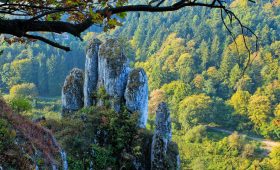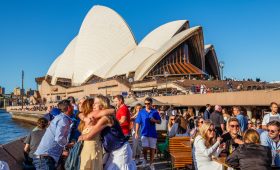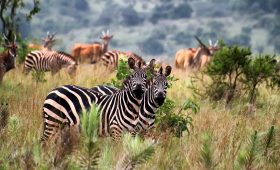Exploring the Sudd Wetland
The Sudd Wetland in South Sudan is a vast and intricate ecosystem that offers a unique experience for those willing to venture into its depths. Covering approximately 57,000 square kilometers, it is the largest freshwater wetland in Africa. Formed by the White Nile, the Sudd is a complex network of channels, lakes, and swamps, providing a rich habitat for diverse flora and fauna.
Location and Geography
Located in South Sudan, the Sudd Wetland is a significant geographical feature of the region. Its dense vegetation includes papyrus reeds, grasslands, and floating islands, creating a sanctuary for wildlife. This diverse environment is a draw for nature enthusiasts and photographers alike.
Wildlife and Biodiversity
The Sudd Wetland is a biodiversity hotspot, home to a wide array of wildlife. It supports a significant bird population, with over 400 species recorded, including the rare shoebill stork and the striking grey-crowned crane. The wetland also hosts elephants, antelopes, hippos, and Nile crocodiles, making it a prime location for wildlife observation.
Best Time to Visit
The optimal time to explore the Sudd Wetland is during the dry season, from December to March. During these months, lower water levels make navigation easier, and the weather is more comfortable, with temperatures ranging from 25 to 30 degrees Celsius. The rainy season, from April to November, presents challenges with higher water levels but also offers lush scenery and abundant birdlife.
Getting There
Traveling to the Sudd Wetland requires careful planning. The journey typically begins at Juba International Airport, South Sudan’s main entry point. From Juba, you can arrange a domestic flight or hire a local guide for the drive to the wetland. Given the limited infrastructure and potential security concerns, it’s advisable to work with an experienced travel agency or guide familiar with the region.
Local Transportation
Once at the Sudd Wetland, the best way to explore is by boat or canoe. The wetland’s waterways are complex, and navigating them requires the expertise of a skilled local boatman. Guided boat tours offer an intimate view of the wetland’s beauty. For those who prefer land exploration, guided walking tours through the grasslands and swamps provide a different perspective on the ecosystem.
Practical Tips and Recommendations
1. Pack Smart
Bring lightweight, breathable clothing suitable for high temperatures. A hat, sunglasses, and sunscreen are essential for sun protection. If visiting during the rainy season, include rain gear in your packing list.
2. Insect Protection
The wetland environment means insects are prevalent. Pack insect repellent to protect against mosquito bites and other pests.
3. Respect the Environment
Maintain a respectful distance from wildlife and avoid disturbing their habitat. Refrain from littering and keep noise levels low to preserve the natural environment.
4. Capture the Experience
Bring a camera or smartphone to document the stunning landscapes and wildlife. However, balance capturing photos with being present in the moment.
Visiting the Sudd Wetland is an adventure that requires preparation and respect for the environment. By planning carefully and engaging with local guides, you can experience the unique beauty and biodiversity of this remarkable ecosystem.



